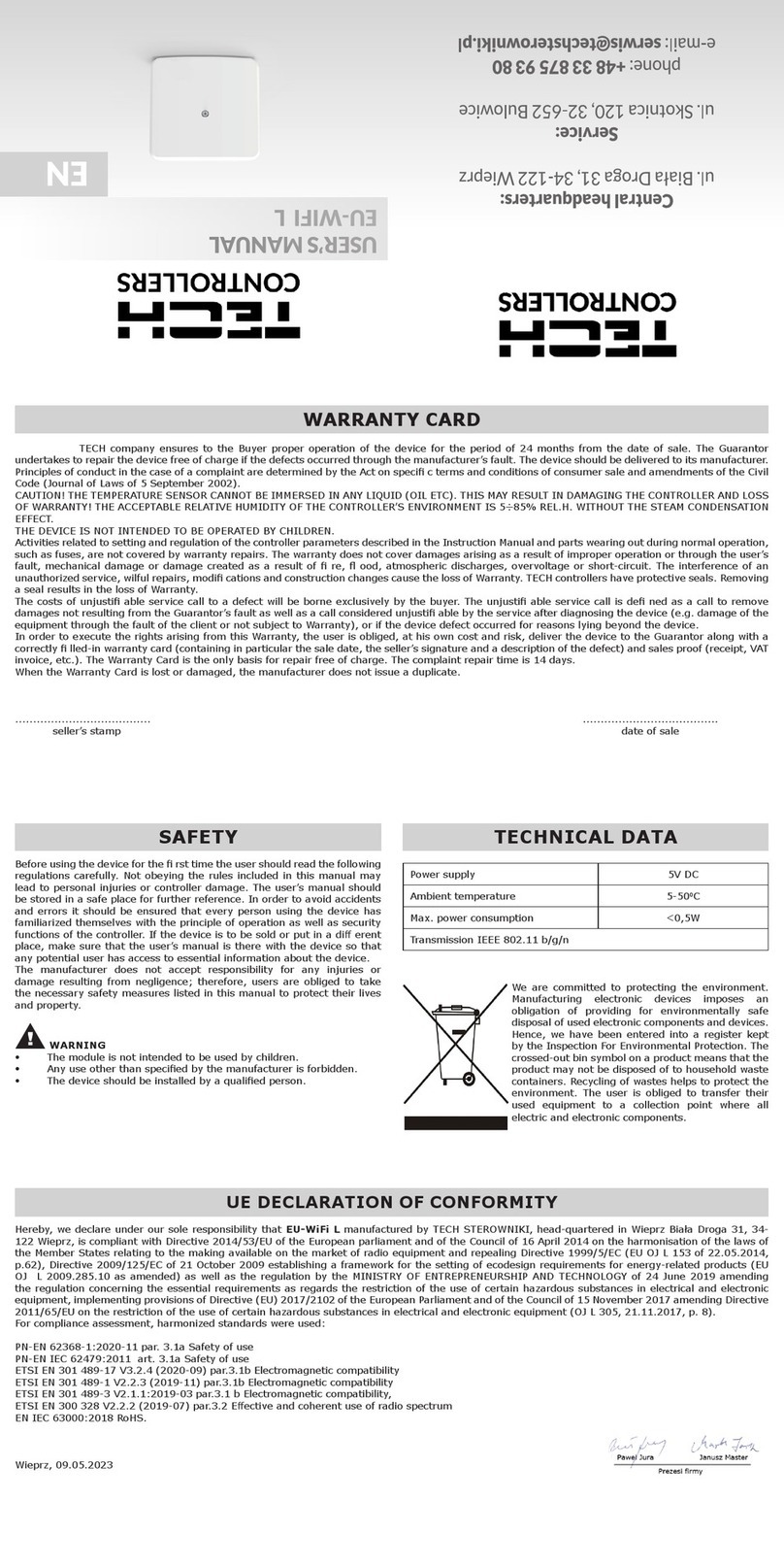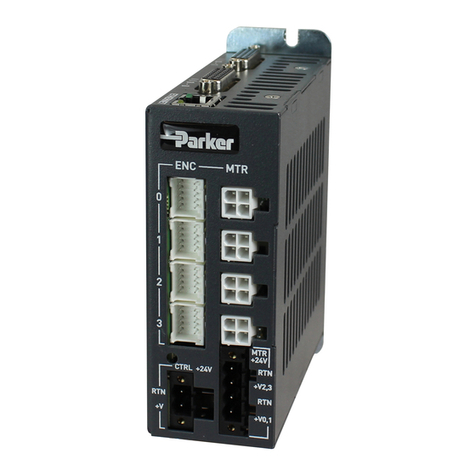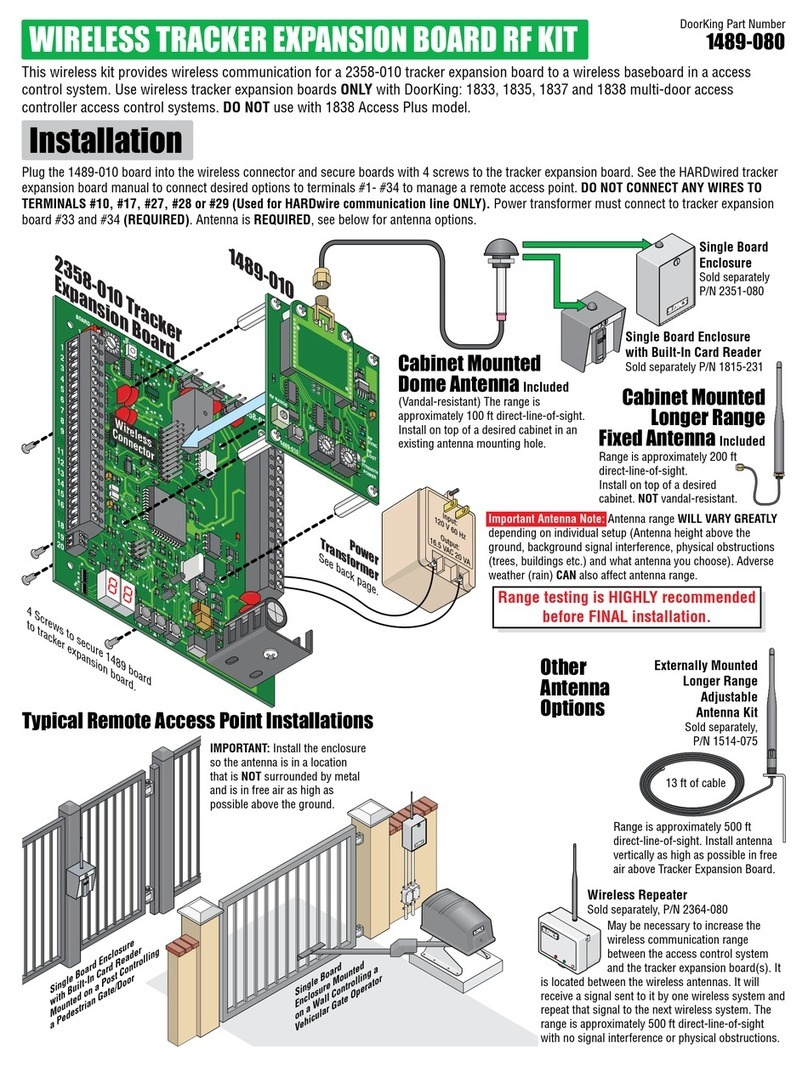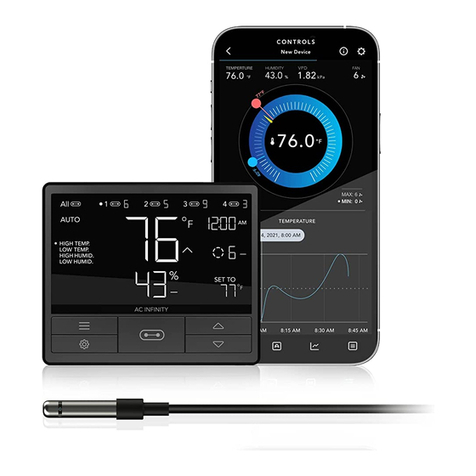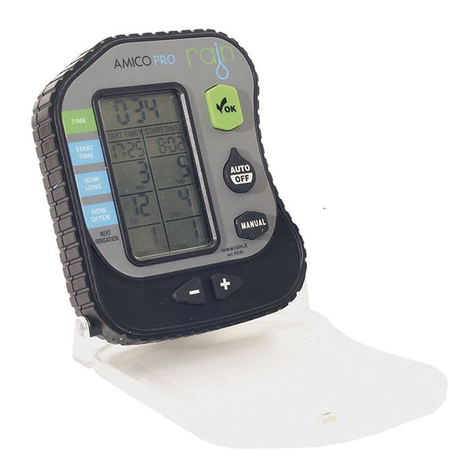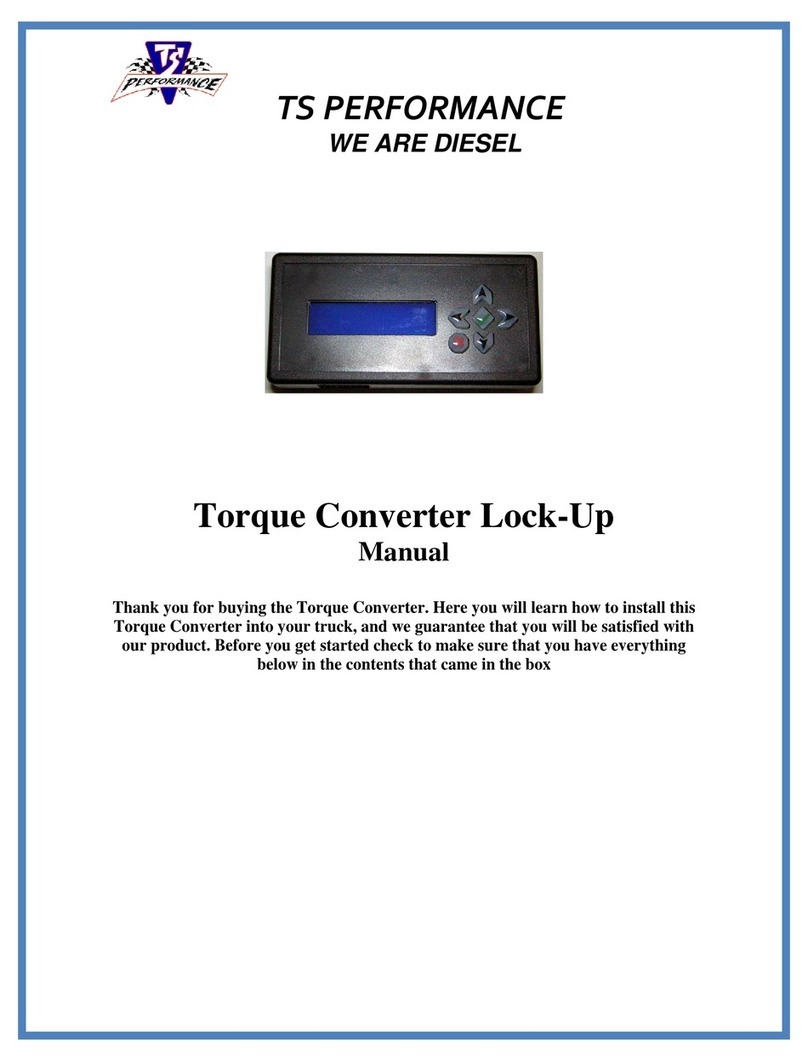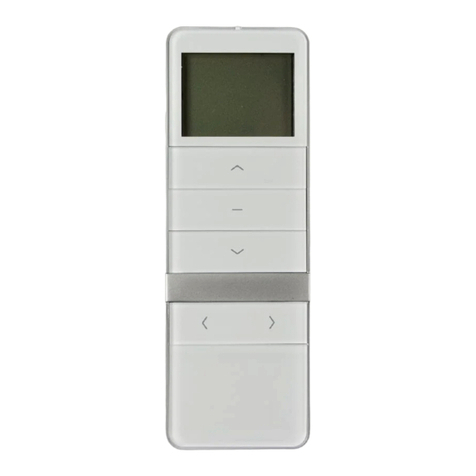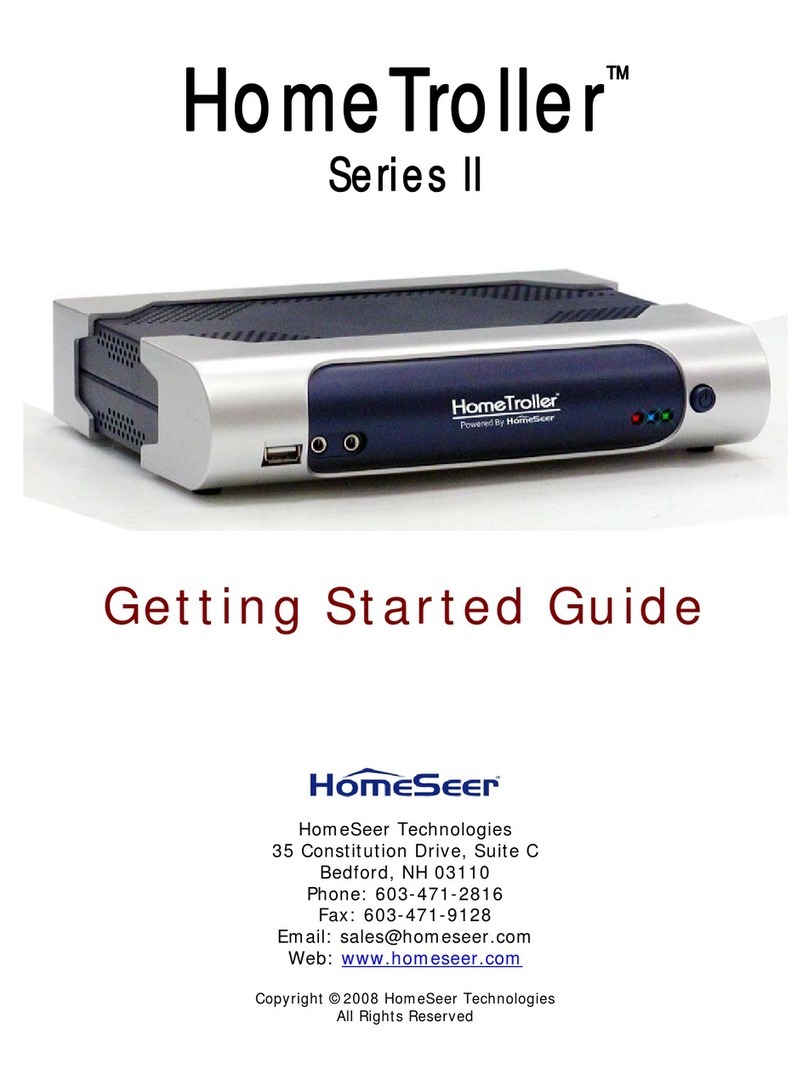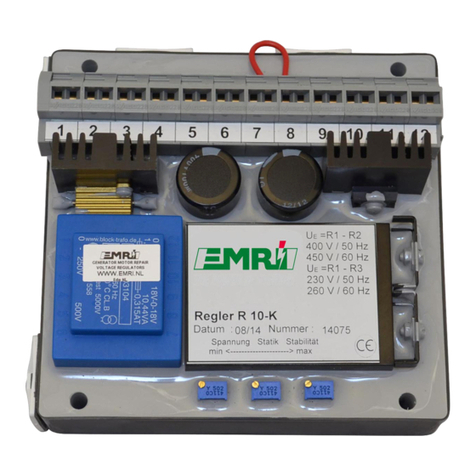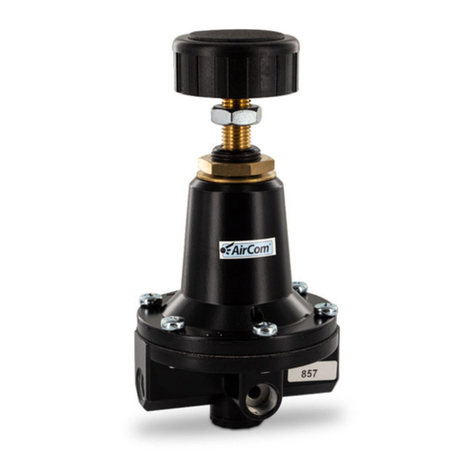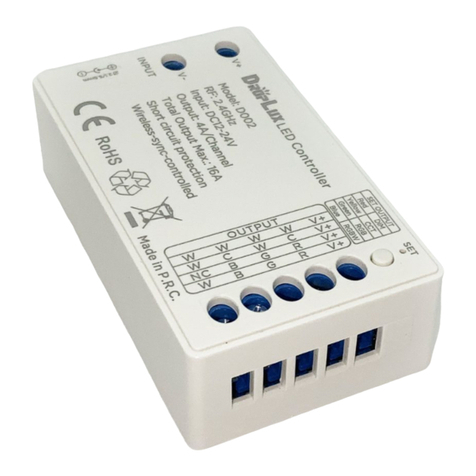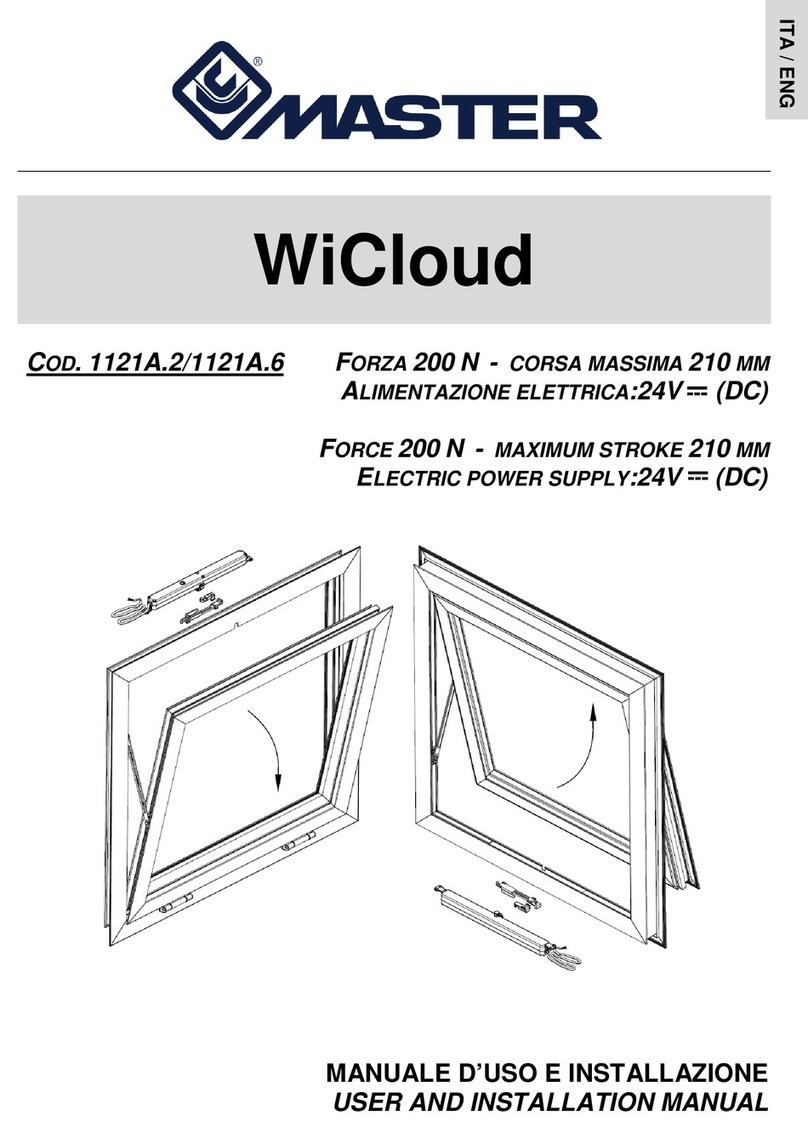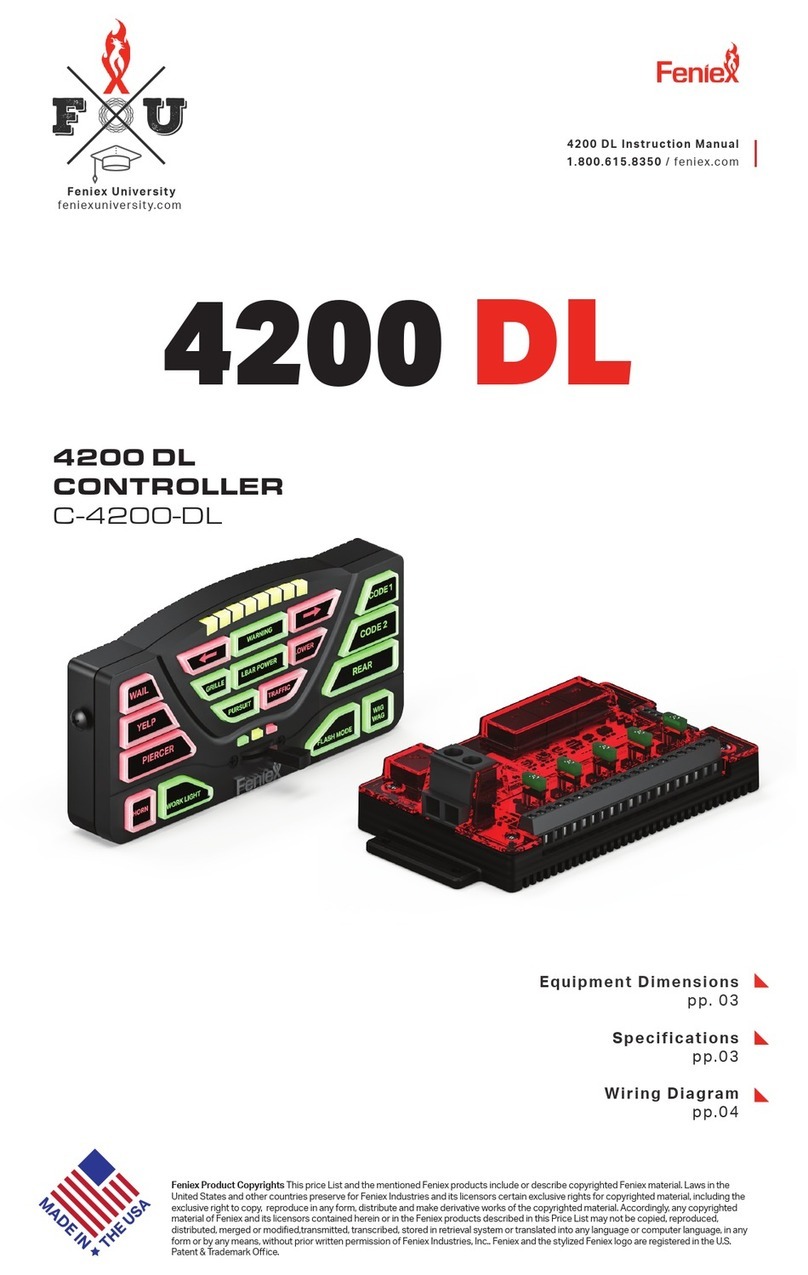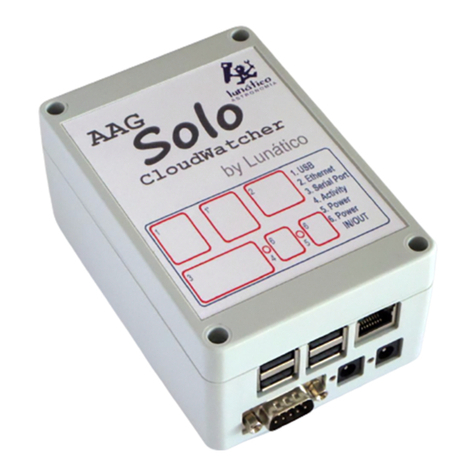HIOS BLT-AY-61 User manual

Driver Controller for Automatic
BLF Brushless Screwdriver
BLT-AY-61
BLT-AY-71
Operation Manual
(As of September of 2017)
HIOS Inc.
1-16-5 Akiyama, Matsudo City, Chiba Pref., Japan 270-2223
Phone: 81-47-392-2001 FAX: 81-47-392-7773
No. ET-A048
17B

- 2 -
Contents
■ Introduction ........................................................................................................................................... 3
■ Outline ...................................................................................................................................................... 4
■ Precautions ............................................................................................................................................. 5
■ BLT-AY-61/BLT-AY-71 Specications ............................................................................................ 6
■ Exterior Drawings ................................................................................................................................ 7
■ Main Functions ..................................................................................................................................... 8
■ Main Terminology ............................................................................................................................... 9
■ Front Panel ............................................................................................................................................. 10
■ Rear Panel Input / Output ................................................................................................................ 11
■ Display When the Power is ON with the Default Settings ................................................... 12
■ How to switch between Reading Start/Pulse Start ................................................................ 13
■ MODE Settings 1 .................................................................................................................................. 14
■ MODE Settings 2 .................................................................................................................................. 15
■ Torque Up Settings ............................................................................................................................. 16
■ Clutch Mechanism ............................................................................................................................... 17
■ Input / Output Connections ............................................................................................................ 18
■ Relationship between RPM and Torque ..................................................................................... 19
BLF-2000, BLF-5000
■ Relationship between RPM and Torque ..................................................................................... 20
BLF-7000 Series
■ Timing Chart Table .............................................................................................................................. 21
■ Timing Chart 01-18 ............................................................................................................................. 22-39
■ After-sale service .................................................................................................................................. 40

- 3 -
■ Introduction
Thank you for purchasing the BLT-AY-61 and BLT-AY-71 Driver controller. Please read this
instruction manual thoroughly before use to ensure proper operation. Store this instruction
manual in a safe place for future reference.
BLT-AY-71 is only up to 120V ac for warranty more then 120V ac, HIOS can not take any respon-
sibility.
BLF-2000 BLF-5000 BLF-7000 Series
BLT-AY-61 BLT-AY-71

- 4 -
■ Outline
Conventional automatic screw drivers of CLF Series, αF Series, and CL-A Series use motors with
carbon brushes that require periodic replacement. Wear in the carbon brushes as well as in the
commentator aects the operating life of the driver, requiring the motor to be replaced peri-
odically.
The BLT-AY-61 and BLT-AY-71 Driver controller uses a brushless motor and not use consumable
parts such as carbon brush. That saves much of maintenance eorts for this driver.
Features such as 2WS* (2-way speed) and REV (reverse rotation), which are available as option-
al for CLT-AY-61/CLT-AY-81, are now included as standard.
A torque protection circuit is used during low speed 2WS operation to vastly improve bit stop-
ping when re-tightening screws.
There is a main power switch, and the primary input voltage ranges from 100 V to 240 V allow-
ing worldwide use.
* With conventional Driver controller CLT-AY-61/CLT-AY-81, similar function is called "2WV", but with these new
automatic drivers, it is called "2WS".
<Notes>
① BLT-AY-61 is a power supply dedicated to BLF-2000 and BLF-5000.
② BLT-AY-71 is a power supply dedicated to BLF-7000 series. Up to
120V ac only.
③ Any other power supply or counter, such as T-70BL or BLOP-STC3,
cannot be used for automatic screwdrivers.
Such misuse might cause an accident or other problem.
(Notice)
We can specially provide you with a screwdriver for left-handed threads on request.

- 5 -
■ Precautions
Please read this instruction manual thoroughly before use to ensure proper operation.
● On any commercial power source, install a ground-fault interrupt breaker and safety circuit
breaker.
● Connect the unit to ground and use only the rated voltage.
● Do not exceed the rated loads for the output connections on the rear panel. Exceeding the
rated load will cause the unit to malfunction.
● If the unit may be subjected to inductive loads from a relay or solenoid valve coil in auxiliary
equipment connected to the input/output connections on the rear panel, install a reverse
polarity diode to suppress electrical noise. The unit may malfunction if noise suppression is
not installed.
● The overload protection will be activated when the driver is locked or has become over-
loaded. If the driver is overloaded repeatedly, the maximum ratings of the unit or attached
electric driver may be exceeded. If the driver becomes overloaded during Forward operation
or begins to malfunction due to developing excessive heat, stop the ongoing operation im-
mediately, turn the main power switch o, remove the power cable, and contact our service
department for repairs.
● When tightening screws on work pieces constructed of plastics susceptible to static electric-
ity build-up, tightening should be performed after static electricity has been discharged. If
working on pieces that have not been properly discharged, static electricity may flow up
through the end of the bit, causing malfunctions.
● A common GND should be used if the unit is connected to auxiliary equipment that is pow-
ered separately. The unit may malfunction if a common GND is not used.
● Do not apply voltage to the inputs or outputs. This may cause malfunctions.
● Extending input/output connection cables longer than necessary or bundling power cables
together can cause malfunctions.
● Choose an installation area with no vibrations. If the unit is installed in a high location, en-
sure that it is properly secured.
● Do not install the unit near high voltage equipment or in an electrically noisy environment.
● Do not place heavy items on top of the unit, or stack the units on top of one another.
● Do not install the unit in an area where it may be subjected to dust or metal fragments.
● Do not use the unit with anything other than HIOS drivers as this will cause the unit to mal-
function.
● Do not disassemble or modify the unit in any way, as doing so may cause the unit to mal-
function. Such malfunctions are not covered by the HIOS warranty and repairs to the unit
may be refused.
● The operating environment for the driver should be between 5C and 40C with relative hu-
midity of 80% or less (there should be no possibility of condensation).
● Do not drop the unit or subject it to mechanical shocks.
● Always hold the plug when inserting or removing power cables or driver cords into or from
sockets.
● Do not drag cords or cables, subject them to oil or to sharp edges, or place them under
heavy objects.
● If the unit will not be used for a long period of time, turn the main power switch OFF and
unplug it from the service outlet.

- 6 -
■ BLT-AY-61/BLT-AY-71 Specications
BLT-AY-61 BLT-AY-71
Input Voltage AC100-240V (47-63Hz)
Power 100W
Fuse Rating 3A/250V (spare fuse included)
Dimensions See p.7 for Exterior Drawings.
Weight Approximately 1.75kg (main unit only)
Driver (See p19, 20)
Compatible Drivers BLF-2000 or BLF-5000 BLF-7000 or BLF-7000X and
BLF-7025X
Rotation Control Direction Forward / Reverse
Driver rpm Settings LOW/HIGH
(2WS)
Low side 05 - 15 (11 steps)
High side 20 - 30 (11 steps)
Power cord length 1.8m
Accessories Power supply connector 1 piece (See p.11)
Note: The RPM may vary between forward and reverse rotation. The above gures are to be used as a guide only.
● Tightening check (impact number) 1 – 4 / Continuous
● Torque up trigger selection
・Forward / Reverse rotation by UP trigger; Forward / Reverse rotation by DOWN trigger
Standard automatic screwdriver does not Torque-up for Reverse.
・If you want to fasten the screw of counter-clock-wise, please ask for the special screwdriver
for it.
・HIGH reverse rotation impact number or LOW reverse rotation impact number should be
set at U0 or d0 to use the driver for removing screws.
● Overtime Protection (Restored by turning power OFF / ON)
10 steps t0 – t9
t1: approximately 10 seconds – t9: approximately 90 seconds, t0: approximately 2550 sec-
onds
Caution!!
This is a protection feature for the controller and driver, and is normally set within the program
on the system side of the sequencer.
● Overload Protection (Recovery by turning power OFF / ON)
"OL" is displayed on the front panel when the protection circuit is activated.
* Caution!!
This setting protects the controller and driver. If the protection circuit is being activated often,
the load on the motor is excessively high. Stop any tightening operations that exceed the rating
of the unit.

- 7 -
7.5
■ Exterior Drawings
BLT-AY-61 and BLT-AY-71 have common exterior drawings.
FrontFront
(Caution) The above exterior drawing of the power supply for brushless screwdrivers Not to
scale.
(Front View)
(Overhead View)
Input terminal block
(Right Side View)
Footing size 4-∅22
Unit: mm

- 8 -
■ Main Functions
1. The motor control circuitry is incorporated into the BLT-AY-61/ BLT-AY-71, giving the driver
a simpler construction.
2. The internal buzzer can be turned o (internal SW 6-1).
3. The FOR input for forward rotation from an external source can be switched between pulse
and reading (internal SW 6-2).
4. Forward / Reverse driver rotation High speed / low speed driver rotation can be controlled
externally.
5. The rpm can be set in 11 steps comprising 20 – 30 for high speed, and 11 steps comprising
5 – 15 for low speed.
6. The shape of the input signal can be selected to suit the movement of the cam during
torque up operations. Torque up can also be set for reverse rotation (for tightening counter
screws).
Eg 1: Set to U1 when tightening with high rpm and one impact (one UP trigger edge)
Eg 2: Set to d3 when tightening with low rpm and three impacts (three DOWN trigger)
7. If the driver keeps rotating and the overtime setting is set on the controller, the driver will
stop automatically and a buzzer will sound (recovery by turning power OFF / ON).
8. If the driver is overloaded, the overload protection circuit will be activated, the driver will
stop and a buzzer will sound (recovery by turning power OFF / ON).
9. Operation display indicators are installed on the front panel to monitor driver operation.
10. Simple settings are available with the combination of four buttons (Mode, ↓ , ↑ and ENT)
and the 2-digit seven segment display.
11. The internal power supply has a power selector switch and can be used with voltages of
any country.
12. The power unit has been made compact and lighter compared to other power units for au-
tomatic drivers.
13. The rear terminal block is removable, making installation and replacement simple.

- 9 -
■ Main Terminology
1. Tightening Check (setting the impact number)
To check that the screw has been tightened properly or to tighten the screw further, the
screw is tightened two or three times after the initial tightening. A tightening check can also
be referred to as a second tightening or re-tightening.
2. Torque Up
After the screw has been tightened and the tightening torque reaches the set torque, the
electric driver clutch disengages.
3. UP Trigger
Used when the clutch signal is received on the upslope of the cam when the bit is rotating at
high speed.
4. DOWN Trigger
Used when the clutch signal is received on the down slope of the cam when the bit is rotat-
ing at low speed.
5. Input Method
Signal input to the unit is through a photo coupler with a maximum current of 10 mA.
If an open collector connection is used, connect the emitter to GND and the input to the col-
lector.
(Caution)
Do not apply any voltage to the inputs. Install a diode that absorbs reverse voltages to the
relay coil on the input connections. If any auxiliary equipment is used, include electrical
noise suppression.
6. Output Method
The output signal of the unit is through a dry contact output internal common GND on one
side with a maximum rated load of DC 24 V / 500 mA. A common GND for connections with
auxiliary equipment should be used.
(Caution)
Do not apply voltage to the inputs. Install a diode that absorbs reverse voltages to the relay
coil on the input connections. If an auxiliary unit is used, carry out electrical noise suppres-
sion.
7. Overload Protection
The overload protection circuit stops output to protect the unit and electric driver from ex-
cess current if the driver is operated into overload.
The overload protection is activated, turn o the control unit and let it sit idle for at least one
minute. The driver may be operated after turning the unit back on.
(Caution)
Please note that if the driver is repeatedly overloaded, activating overload protection, the cur-
rent rating of the unit or the electric driver may be exceeded.

- 10 -
■ Front Panel
2. Driver Connector
5. Function Button
▲ UP Button
▼ DOWN Button
ENT Button
3. Operation Display LED 4. Setting Value
Segment Display
1. Main SW
A green LED will light up when the power is turned ON, and the operation display LEDs and
all segments of the value display will light up for 1 second.
2. Driver Connector
Attach the automatic BL driver cable.
3. Operation Display LEDs
The state of auxiliary inputs and outputs as well as the driver’s operation can be monitored
with this LED array.
4. Setting Value Segment Display
Displays the settings for torque up rpm for Forward driver rotation / torque up rpm for re-
verse rotation / 2WS HIGH side rpm / 2WS LOW side rpm / 2WS HIGH side overtime / 2WS
LOW side overtime.
5. Function Button / UP Button / DOWN Button / ENT Button
Driver operating settings should be changed after a reset signal has been input. Other
inputs such as 2WS should also be disabled so that there are no LEDs lit up. Pressing the
Function Button will result in a short beeping buzzer sound. Holding the button down lon-
ger will result in a short beeping buzzer sound, and the operation display LED and setting
value segment display will turn on. Pressing the ENT button will switch between the opera-
tion display LED and setting value segment. The UP/DOWN buttons are used to change the
value of the settings.
After the settings are complete and the Function Button is pressed again, a short beep
buzzer will sound. On holding the button down longer, a two-second beeping buzzer will
sound one second from the start of pressing the button and the setting value segment dis-
play will turn o, indicating that settings are complete.
● Refer to page * for more information on how to change each setting.

- 11 -
■ Rear Panel Input / Output
No Input /
Output Signal Name Outline
1 External Output FINISH Output
Output is present on this terminal when screw tight-
ening is complete. Output ceases when either the
next FOR or REV input is received or when the RESET
input is used.
2 Common COM Common for input and output. This is connected to
the internal controller GND.
3 External Input REV Input
Apply input to this terminal when you wish to operate
the driver in reverse rotation. The driver will operate
in reverse while the signal is present.
4 External Input 2WS Input Driver rotation SPEED can switch between two stages.
2WS will be the LOW side while the signal is ON.
5 External Input RESET Input Used when the driver operation is to be stopped by
an external source.
6 External Input FOR Input
Apply input to this terminal when you wish to oper-
ate the driver in forward rotation. The method can be
selected between pulse and reading. *1
*1 When the input method is set to pulse, the driver will operate in forward rotation when a FOR input pulse of
100 ms or more is received.
To stop rotation, apply input to the RESET terminal.
The reading input for the start method means that the driver rotates FOR while FOR is input.
To stop the rotation, turn the FOR input OFF or use the RESET input.
Pulse or reading can be switched with the DIP SW on the internal board.
Inlet with Fuse Holder 3 A / 250 V
External I/O terminal
Terminal block connector
on the main body
Model number: XW4A-10B1-V1
Accessories:
Power supply side
Terminal block connector
1. Main SW

- 12 -
p.12
MODE
ENT
DRIVER
POWER
FOR OPE TUP FIN REV RES 2WS OVT
The BLT-AY-61 and BLT-AY-71 can be switched between 2WS HIGH (20 – 30) and 2WS LOW
(5 – 15) by turning 2WS ON / OFF. The bit can be rotated in reverse by turning REV (reverse
rotation input) ON / OFF.
The torque up number can be set regardless of whether the rotation is forward / reverse
or HIGH / LOW.
Change the number by following the steps in the MODE settings (pages 14 – 15).
In order to prevent the driver from rotating in the case of an accident, the built-in over-
time timer can also be set in the same way regardless of whether the rotation is forward /
reverse or HIGH / LOW.
Change the number by following the steps in the MODE settings (pages 14 – 15).
The factory settings are as follows.
● 2WS HIGH forward rotation impact number U1
● 2WS HIGH reverse rotation impact number U0
● 2WS HIGH setting speed 30
● 2WS HIGH overtime setting value t0 (approximately 42 minutes)
● 2WS LOW forward rotation impact number d1
● 2WS LOW reverse rotation impact number d0
● 2WS LOW setting speed 15
● 2WS LOW overtime setting value t0 (approximately 42 minutes)
● Overload protection function Front panel OL display
* For the impact number setting, if you set U0 or d0, torque up does not happen and the impact is contin-
ued (setting without torque up).
When the main SW is turned ON, the green
SW LED light up.
All operation LEDs and the setting value seg-
ment display will turn on for one second.
Display When the Power is ON with the Default Settings
(Note)
HIGH reverse rotation impact number or LOW reverse rotation impact number should be set at
U0 or d0 to use the driver for removing screws.

- 13 -
■ How to switch between Reading Start/Pulse Start
1) Turn the power to the BLT-AY-61 or BLT-AY-71 off and remove the power cable from the
power outlet.
2) Remove the driver cable from the plug on the main unit.
3) Remove the cover of the main unit. Take care not to lose the screws.
4) Switch between reading start/pulse start using No. 2 of SW6 on the circuit board within the
main unit.
Pulse start is enabled with No. 2 ON, and Reading Start with No. 2 OFF.
5) After the settings have been changed, replace the cover of the main unit and attach with
the eight screws.
* Take care to prevent foreign particles entering the main unit while the cover is o.
No Function
1Buzzer (ON -> buzzer beeps / OFF -> buzzer does not
beep
2Switching between Reading Start/Pulse Start
ON -> Pulse Start / OFF -> Reading Start
BLT-AY-61/BLT-AY-71
(with the cover removed)
(removing the eight
screws on each side)

- 14 -
(1) Hold down the Function Button
"Beep (2 seconds) beep beep"
(2) Forward rotation (2WS – HIGH) torque up settings
Use ▲ / ▼ to change the settings (U0 to U4 and
d0 to d4)
Always check the changes with ENT. If changes
to other settings are not required, hold down the
Function Button to complete the setting process.
(3)
Reverse rotation (2WS – HIGH) torque up settings
※
Use ▲ / ▼ to change the settings (U0 to U4 and
d0 to d4)
Always check the changes with ENT. If changes
to other settings are not required, hold down the
Function Button to complete the setting process.
(4) Forward / reverse rotation (2WS – HIGH) speed
settings
Use ▲ / ▼ to change the settings (20 to 30)
Always check the changes with ENT. If changes
to other settings are not required, hold down the
Function Button to complete the setting process.
(5) Forward / reverse rotation (2WS – HIGH) overtime
settings
Use ▲ / ▼ to change the settings (t0 to t9)
Always check the changes with ENT. If changes
to other settings are not required, hold down the
Function Button to complete the setting process.
MODE Settings 1

- 15 -
MODE Settings 2
(6) Forward rotation (2WS – LOW) torque up settings
Use ▲ / ▼ to change the settings (U0 to U4 and
d0 to d4)
Always check the changes with ENT. If changes
to other settings are not required, hold down the
Function Button to complete the setting process.
(7)
Reverse rotation (2WS – LOW) torque up settings
※
Use ▲ / ▼ to change the settings (U0 to U4 and
d0 to d4)
Always check the changes with ENT. If changes
to other settings are not required, hold down the
Function Button to complete the setting process.
(8) Forward / reverse rotation (2WS – LOW) speed
settings
Use ▲ / ▼ to change the settings (05 to 15)
Always check the changes with ENT. If changes
to other settings are not required, hold down the
Function Button to complete the setting process.
(9) Forward / reverse rotation (2WS – LOW) over-
time settings
Use ▲ / ▼ to change the settings (t0 to t9)
Always check the changes with ENT. If changes
to other settings are not required, hold down the
Function Button to complete the setting process.
(10) Hold down the Function Button
"Beep (1 second) beeeep (2 seconds)"
All displays will turn o
(Note)
HIGH reverse rotation impact number or LOW reverse
rotation impact number should be set at U0 or d0 to
use the driver for removing screws.

- 16 -
■ Torque Up Settings
Most customers are undoubtedly experienced in driving a car, and are aware that cars travel-
ing up a slope at a high speed will end up going over the mountain even when the brakes are
applied, while cars traveling at a low speed will come to a stop before reaching the top of the
mountain when the brakes are applied.
The automatic brushless screwdriver BLF-series uses a system that traverses the lobe of a me-
chanical cam to apply torque to screws. To ensure that torque is applied to the bit accurately, a
clutch is used when traversing the cam. The timing of the application of the brake when the bit
is rotating at high speeds and low speeds is required to be adjusted to traverse the lobe of the
cam.
The BLT-AY-61/BLT-AY-71 controller is designed to control the rotational speed of the driver
over a large range of speeds from low to high, as well as to allow settings for torque up with
DOWN trigger at low speeds and UP trigger at high speeds.
Applying the brakes here at a high
speed will result in the car stopping
past the top of the mountain.
The brakes are applied at a low speed
here.

- 17 -
■ Clutch Mechanism
The clutch mechanism is described below.
Detection SW
"OFF"
Cam
Roller
Roller
Torque adjustment
pressure
Torque adjustment
pressure
Torque adjustment
pressure
Torque adjustment
pressure
Movement to
traverse cam
Movement to
traverse cam
Movement to
traverse cam
Movement to
traverse cam
Roller
Roller
Cam
Cam
Cam
Detection SW
"ON"
Detection SW
"ON"
Detection SW
"ON"
1
2
3
4
Diagram of the
mechanism that
allows the driver to
detect torque.
If the speed when
traversing the cam is
high, the detection
SW turns ON (before
traversing the cam)
and the brake is ap-
plied to the motor.
If the speed when
traversing the cam is
low, the detection SW
turns OFF (after tra-
versing the cam) and
the brake is applied to
the motor.
By traversing the cam,
torque is transferred
accurately and
the screw is com-
pletely tightened.

- 18 -
■ Input/Output Connections
FOR input terminal
Input/Output circuit layout
The input circuit consists
of a photo coupler. Drop
the input terminal to GND
level using an open col-
lector.
The output circuit uses a dry con-
tact; however, one side has a com-
mon GND.
RESET input terminal Same as above circuit layout
2WS input terminal Same as above circuit layout
REV input terminal Same as above circuit layout
COM input terminal
FINISH output terminal
Internal
circuit
Internal Power / DC 24V
Internal
circuit
GND

- 19 -
■ Relationship between RPM and Torque (BLF-2000 / BLF-5000)
For the unloaded rotation speed, consider the value in the chart with the range of ± 10%.
Screwdriver BLF-2000* BLF-5000
LOW 11 steps switching
Speed Set-
ting RPM Max Torque Min Torque RPM Max Torque Min Torque
05 120 r.p.m
0.35 N・m 0.03 N・m
115 r.p.m
0.6 N・m
0.3 N・m
06 150 r.p.m 135 r.p.m
07 165 r.p.m 150 r.p.m
08 187 r.p.m 180 r.p.m
0.8 N・m
09 210 r.p.m 195 r.p.m
10 232 r.p.m 210 r.p.m
11 270 r.p.m 240 r.p.m
12 285 r.p.m 255 r.p.m
1 N・m
13 300 r.p.m 285 r.p.m
14 315 r.p.m 300 r.p.m
15 345 r.p.m 320 r.p.m
Screwdriver BLF-2000* BLF-5000
HIGH 11 steps switching
Speed Set-
ting RPM Max Torque Min Torque RPM Max Torque Min Torque
20 690 r.p.m
0.35 N・m 0.03 N・m
660 r.p.m
1 N・m 0.3 N・m
21 720 r.p.m 690 r.p.m
22 750 r.p.m 720 r.p.m
23 780 r.p.m 750 r.p.m
24 810 r.p.m 780 r.p.m
25 825 r.p.m 810 r.p.m
26 870 r.p.m 840 r.p.m
27 975 r.p.m 940 r.p.m
28 975 r.p.m 940 r.p.m
29 975 r.p.m 940 r.p.m
30 975 r.p.m 940 r.p.m
* BLF-2000 includes two torque control springs. The silver spring accessory is used for high torque measure-
ment while the black spring attached to the main body is used for low torque measurement.
Please refer to the reference table of output torque in the "Instruction Manual" for the screwdriver for auto-
matic BLF brushless screwdriver.
(Cautions)
1. RPM may vary due to dierences between forward rotation and reverse rotation. The reference
value is a rough guideline.
2. The listed RPMs were measured without load. In case Speed Setting is 27 or more, the actual
RPMs may dier from the values in the table according to the loads.
The torques were measured with our Torque meter (HP) and Fidaptor.
3. The values in above table may dier from the values observed in your environment. Please use
the above values as a rough guideline.

- 20 -
■ Relationship between RPM and Torque (BLF-7000 Series)
For the unloaded rotation speed, consider the value in the chart with the range of ± 10%.
Screwdriver BLF-7000 / BLF-7000X BLF-7025X
LOW 11 steps switching
Speed Set-
ting RPM Max Torque Min Torque RPM Max Torque Min Torque
05 150 r.p.m
1.1 N・m
0.7 N・m
120 r.p.m
1.4 N・m
1.2 N・m
06 180 r.p.m 140 r.p.m
07 210 r.p.m 160 r.p.m
08 240 r.p.m 180 r.p.m
09 270 r.p.m 210 r.p.m
10 300 r.p.m
1.5 N・m
230 r.p.m
11 330 r.p.m 250 r.p.m
12 360 r.p.m 280 r.p.m
2 N・m
13 390 r.p.m 300 r.p.m
14 420 r.p.m 320 r.p.m
15 450 r.p.m 350 r.p.m
Screwdriver BLF-7000 / BLF-7000X BLF-7025X
HIGH 11 steps switching
Speed Set-
ting RPM Max Torque Min Torque RPM Max Torque Min Torque
20 495 r.p.m
2 N・m 0.7 N・m
400 r.p.m
2.5 N・m 1.2 N・m
21 510 r.p.m 420 r.p.m
22 540 r.p.m 440 r.p.m
23 570 r.p.m 470 r.p.m
24 600 r.p.m 490 r.p.m
25 615 r.p.m 510 r.p.m
26 645 r.p.m 540 r.p.m
27 735 r.p.m 600 r.p.m
28 735 r.p.m 600 r.p.m
29 735 r.p.m 600 r.p.m
30 735 r.p.m 600 r.p.m
(Cautions)
1. RPM may vary due to dierences between forward rotation and reverse rotation. The reference
value is a rough guideline.
2. The listed RPMs were measured without load. In case Speed Setting is 27 or more, the actual
RPMs may dier from the values in the table according to the loads
The torques were measured with our Torque meter (HP) and Fidaptor.
3. The values in above table may dier from the values observed in your environment. Please use
the above values as a rough guideline.
This manual suits for next models
1
Table of contents
